House modifications for preventing malaria
- PMID: 36200610
- PMCID: PMC9536247
- DOI: 10.1002/14651858.CD013398.pub4
House modifications for preventing malaria
Abstract
Background: Malaria remains an important public health problem. Research in 1900 suggested house modifications may reduce malaria transmission. A previous version of this review concluded that house screening may be effective in reducing malaria. This update includes data from five new studies.
Objectives: To assess the effects of house modifications that aim to reduce exposure to mosquitoes on malaria disease and transmission.
Search methods: We searched the Cochrane Infectious Diseases Group Specialized Register; Central Register of Controlled Trials (CENTRAL), published in the Cochrane Library; MEDLINE (PubMed); Embase (OVID); Centre for Agriculture and Bioscience International (CAB) Abstracts (Web of Science); and the Latin American and Caribbean Health Science Information database (LILACS) up to 25 May 2022. We also searched the World Health Organization International Clinical Trials Registry Platform, ClinicalTrials.gov, and the ISRCTN registry to identify ongoing trials up to 25 May 2022.
Selection criteria: Randomized controlled trials, including cluster-randomized controlled trials (cRCTs), cross-over studies, and stepped-wedge designs were eligible, as were quasi-experimental trials, including controlled before-and-after studies, controlled interrupted time series, and non-randomized cross-over studies. We sought studies investigating primary construction and house modifications to existing homes reporting epidemiological outcomes (malaria case incidence, malaria infection incidence or parasite prevalence). We extracted any entomological outcomes that were also reported in these studies.
Data collection and analysis: Two review authors independently selected eligible studies, extracted data, and assessed the risk of bias. We used risk ratios (RR) to compare the effect of the intervention with the control for dichotomous data. For continuous data, we presented the mean difference; and for count and rate data, we used rate ratios. We presented all results with 95% confidence intervals (CIs). We assessed the certainty of evidence using the GRADE approach.
Main results: One RCT and six cRCTs met our inclusion criteria, with an additional six ongoing RCTs. We did not identify any eligible non-randomized studies. All included trials were conducted in sub-Saharan Africa since 2009; two randomized by household and four at the block or village level. All trials assessed screening of windows, doors, eaves, ceilings, or any combination of these; this was either alone, or in combination with roof modification or eave tube installation (an insecticidal "lure and kill" device that reduces mosquito entry whilst maintaining some airflow). In one trial, the screening material was treated with 2% permethrin insecticide. In five trials, the researchers implemented the interventions. A community-based approach was adopted in the other trial. Overall, the implementation of house modifications probably reduced malaria parasite prevalence (RR 0.68, 95% CI 0.57 to 0.82; 5 trials, 5183 participants; moderate-certainty evidence), although an inconsistent effect was observed in a subpopulation of children in one study. House modifications reduced moderate to severe anaemia prevalence (RR 0.70, 95% CI 0.55 to 0.89; 3 trials, 3643 participants; high-certainty evidence). There was no consistent effect on clinical malaria incidence, with rate ratios ranging from 0.38 to 1.62 (3 trials, 3365 participants, 4126.6 person-years). House modifications may reduce indoor mosquito density (rate ratio 0.63, 95% CI 0.30 to 1.30; 4 trials, 9894 household-nights; low-certainty evidence), although two studies showed little effect on this parameter.
Authors' conclusions: House modifications - largely screening, sometimes combined with insecticide and lure and kill devices - were associated with a reduction in malaria parasite prevalence and a reduction in people with anaemia. Findings on malaria incidence were mixed. Modifications were also associated with lower indoor adult mosquito density, but this effect was not present in some studies.
Copyright © 2022 The Authors. Cochrane Database of Systematic Reviews published by John Wiley & Sons, Ltd. on behalf of The Cochrane Collaboration.
Conflict of interest statement
TF is a CIDG Research Associate, and was not involved in the editorial process. She has no known conflicts of interest to declare. JFA has no known conflicts of interest to declare. MC is a CIDG Editor, and was not involved in the editorial process. She has no known conflicts of interest to declare. MN has no known conflicts of interest to declare. EAO has no known conflicts of interest to declare.
Figures
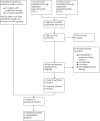
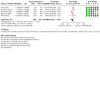
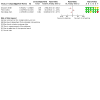
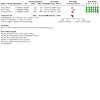
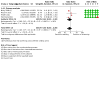
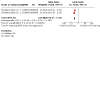

Update of
-
House modifications for preventing malaria.Cochrane Database Syst Rev. 2021 Jan 20;1(1):CD013398. doi: 10.1002/14651858.CD013398.pub3. Cochrane Database Syst Rev. 2021. Update in: Cochrane Database Syst Rev. 2022 Oct 6;10:CD013398. doi: 10.1002/14651858.CD013398.pub4. PMID: 33471371 Free PMC article. Updated.
References
References to studies included in this review
Getawen 2018 {published data only}
-
- Getawen SK, Ashine T, Massebo F, Woldeyes D, Lindtjørn B. Exploring the impact of house screening intervention on entomological indices and incidence of malaria in Arba Minch town, southwest Ethiopia: a randomized control trial. Acta Tropica 2018;181:84-94. - PubMed
Kirby 2009 {published data only}
McCann 2021 {published data only}
-
- McCann RS, den Berg H, Diggle PJ, Vugt M, Terlouw DJ, Phiri KS, et al. The effect of community-driven larval source management and house improvement on malaria transmission when added to the standard malaria control strategies in Malawi: a cluster-randomized controlled trial. BMC Malaria Journal 2021;20:232. - PMC - PubMed
Minakawa 2022 {published data only}
Ng'ang'a 2020 {published data only}
Pinder 2021 {published data only}
References to studies excluded from this review
Berti 1960 {published data only}
-
- Berti AL, Suarez MA, Cheng Hurtado A. The Division of Malariology, with its studies and its program on a healthful rural dwelling, offers to the agrarian reform the method, the doctrine and the skill for fighting against the thatched hut. Revista Venezolana de Sanidad y Asistencia Social 1960;25:55-60. - PubMed
Carrasco‐Tenezaca 2021 {published data only}
Gouissi 2013 {published data only}
-
- Gouissi FM, Salifou S, Edorh AP, Sedjame AR, Gouissi SG, Yadouleton WA, et al. Contribution of poses screen preimpregnated (PSP) installed at openings and eaves of dwellings in the reduction of malaria transmission in the commune of Aguégués in Benin. Asian Pacific Journal of Tropical Medicine 2013;6:61-7. - PubMed
References to ongoing studies
Asale 2020 {published data only}
-
- Asale A, Kassie M, Abro Z, Enchalew B, Belay A, Sangoro P, et al. Combined evaluation of long-lasting insecticidal nets, house screening and push-pull technology as appropriate interventions for integrated management of malaria vectors and cereal pests in Ethiopia: study protocol for household randomised controlled trial. Pre-print: Research Square 2021:1-24. [DOI: 10.21203/rs.3.rs-523580/v1] - DOI
JPRN‐UMIN000045079 {published data only}
-
- JPRN-UMIN000045079. Evaluation of OlysetPlus ceiling net in Lake Victoria basin, Kenya. trialsearch.who.int/Trial2.aspx?TrialID=JPRN-UMIN000045079 (first received 2021).
Mshamu 2022 {published data only}
-
- Mshamu S, Mmbando A, Meta J, Bradley J, Bøjstrup TC, Day NPJ, et al. Assessing the impact of a novel house design on the incidence of malaria in children in rural Africa: study protocol for a household randomized controlled trial. Pre-print: Research Square 2022:1-22. [DOI: 10.21203/rs.3.rs-1262951/v1] - DOI
NCT04622241 {published data only}
-
- NCT04622241. Uganda Housing Modifications Study (UHMS). clinicaltrials.gov/ct2/show/NCT04622241 (first received 9 November 2020).
Odufuwa 2022 {published data only}
-
- Odufuwa OG, Moore SJ, Mboma ZM, Mbuba E, Muganga J, Moore J, et al. Insecticide-treated eave nets and window screens for malaria control in Chalinze district, Tanzania: a study protocol for a household randomised control trial. Trials 2022;23:578. [DOI: 10.1186/s13063-022-06408-4] - DOI - PMC - PubMed
Sangoro 2021 {published data only}
-
- Sangoro OP, Fillinger U, Saili K, Nkya TE, Marubu R, Masaninga F, et al. Evaluating the efficacy, impact and feasability of community-based house screening as a complementary malaria control intervention in southern Africa: a study protocol for a household randomised trial. Trials 2021;22:883. - PMC - PubMed
Additional references
Andriessen 2015
-
- Andriessen R, Snetselaar J, Suer RA, Osinga AJ, Deschietere J, Lyimo IN, et al. Electrostatic coating enhances bioavailability of insecticides and breaks pyrethroid resistance in mosquitoes. Proceedings of the National Academy of Sciences of the United States of America 2015;112(39):12081-6. - PMC - PubMed
Babalola 2016
Balshem 2011
-
- Balshem H, Helfand M, Schünemann HJ, Oxman AD, Kunz R, Brozek J, et al. GRADE guidelines: 3. Rating the quality of evidence. Journal of Clinical Epidemiology 2011;64(4):401-6. - PubMed
Bhatt 2015
Bousema 2012
Boyd 1926
-
- Boyd MF. The influence of obstacles unconsciously erected against anophelines (housing and screening) upon the incidence of malaria. American Society of Tropical Medicine and Hygiene 1926;s1-6(2):157-60.
Celli 1901
-
- Celli A. The new preventative treatment of malaria in Latium. Collected Papers on Malaria 1901;1899-1912:1-12.
Charlwood 2003
Covidence [Computer program]
-
- Covidence. Melbourne, Australia: Veritas Health Innovation, accessed prior to 24 September 2020. Available at covidence.org.
Eshun‐Wilson 2019
Foy 2019
Gachelin 2018
Gillies 1968
-
- Gillies MT, De Meillon B. The Anophelinae of Africa south of the Sahara (Ethiopian Zoogeographical Region). South African Institute for Medical Research, 1968.
Guyatt 2011
-
- Guyatt GH, Oxman AD, Schünemann HJ, Tugwell P, Knottnerus A. GRADE guidelines: a new series of articles in the Journal of Clinical Epidemiology. Journal of Clinical Epidemiology 2011;64(4):380-2. - PubMed
Guyatt 2013
-
- Guyatt G, Oxman AD, Sultan S, Brozak J, Glasziou P, Alonso-Coello P, et al. GRADE guidelines: 11. Making an overall rating of confidence in effect estimates for a single outcome and for all outcomes. Journal of Clinial Epidemiology 2013;66(2):151-7. - PubMed
Harbord 2006
-
- Harbord RM, Egger M, Sterne JA. A modified test for small-study effects in meta analyses of controlled trials with binary endpoints. Statistics in Medicine 2006;25(20):3443-57. - PubMed
Higgins 2011
-
- Higgins JP, Green S, editor(s). Cochrane Handbook for Systematic Reviews of Interventions Version 5.1.0 (updated March 2011). The Cochrane Collaboration, 2011. Available from handbook.cochrane.org.
Higgins 2022
-
- Higgins JP, Savović J, Page MJ, Elbers RG, Sterne JA. Chapter 8: Assessing risk of bias in a randomized trial. In: Higgins JP, Thomas J, Chandler J, Cumpston M, Li T, Page MJ, Welch VA, editor(s). Cochrane Handbook for Systematic Reviews of Interventions version 6.3 (updated February 2022). Cochrane, 2022. Available from training.cochrane.org/handbook.
Huho 2013
International Artemisinin Study Group 2004
-
- Adjuik M, Babiker A, Garner P, Olliaro P, Taylor W, International Artemisin Study Group. Artesunate combinations for treatment of malaria: meta-analysis. Lancet 2004;363(9402):9-17. - PubMed
Jawara 2018
Jones 2022
Kaindoa 2018
-
- Kaindoa EW, Finda M, Kiplagat J, Mkandawile G, Nyoni A, Coetzee M, et al. Housing gaps, mosquitoes and public viewpoints: a mixed methods assessment of relationships between house characteristics, malaria vector biting risk and community perspectives in rural Tanzania. Malaria Journal 2018;17:298. - PMC - PubMed
Kayedi 2008
-
- Kayedi MH, Lines JD, Haghdoost AA, Vatandoost MH, Rassi Y, Khamisabady K. Evaluation of the effects of repeated hand washing, sunlight, smoke and dirt on the persistence of deltamethrin on insecticide-treated nets. Transactions of the Royal Society of Tropical Medicine and Hygiene 2008;102(8):811-6. - PubMed
Kua 2021
Lindsay 1988
-
- Lindsay SW, Snow RW. The trouble with eaves; house entry by vectors of malaria. Transactions of the Royal Society of Tropical Medicine and Hygiene 1988;82(4):645-6. - PubMed
Lindsay 2019
Manson 1900
Ogoma 2010
Phiri 2021
Pryce 2018
Ranson 2016
-
- Ranson H, Lissenden N. Insecticide resistance in African anopheles mosquitoes: a worsening situation that needs urgent action to maintain malaria control. Trends in Parasitology 2016;32(3):187-96. - PubMed
Review Manager 2020 [Computer program]
-
- Review Manager 5 (RevMan 5). Version 5.4. Copenhagen: Nordic Cochrane Centre, The Cochrane Collaboration, 2020.
Risk of Bias 2
-
- Risk of Bias tools. www.riskofbias.info/welcome/rob-2-0-tool/current-version-of-rob-2 (accessed 19 January 2022).
Somi 2007
-
- Somi MF, Butler JR, Vahid F, Njau J, Kachur SP, Abdulla S. Is there evidence for dual causation between malaria and socioeconomic status? Findings from rural Tanzania. American Journal of Tropical Medicine and Hygiene 2007;77(6):1020-7. - PubMed
Star Homes Project
-
- The Star Homes Project. ingvartsen.dk/star-homes/05j7kpd9jgwrs3g4yattohlxwnyz3q (accessed 12 December 2021).
Sterne 2016
Sterne 2019
-
- Sterne JA, Savović J, Page MJ, Elbers RG, Blencowe NS, Boutron I, et al. RoB 2: a revised tool for assessing risk of bias in randomised trials. BMJ 2019;366:l4898. - PubMed
Tusting 2015
Tusting 2017
UN 2019
-
- United Nations. World Population Prospects 2019: Highlights. United Nations Department of Global Communications, 2019.
WHO 2011
-
- World Health Organization. Vitamin and mineral nutrition information system. Haemoglobin concentrations for the diagnosis of anaemia and assessment of severity; 2011. www.who.int/vmnis/indicators/haemoglobin/en/index.html (accessed prior to 23 January 2019).
WHO 2017a
-
- World Health Organization. World Malaria Report. Geneva, Switzerland: World Health Organization, 2017.
WHO 2017b
-
- World Health Organization. Global Vector Control Response 2017-2030. Geneva, Switzerland: World Health Organization, 2017.
WHO 2018
-
- World Health Organization. World Malaria Report. Geneva, Switzerland: World Health Organization, 2018.
WHO 2021
-
- World Health Organization. World Malaria Report. Geneva, Switzerland: World Health Organization, 2021.
WHO 2022
-
- Malaria fact sheet. www.who.int/news-room/fact-sheets/detail/malaria (accessed 15 March 2022).
References to other published versions of this review
Furnival‐Adams 2019
-
- Furnival-Adams J, Olanga E, Napier M, Garner P. Housing interventions for preventing malaria. Cochrane Database of Systematic Reviews 2019, Issue 8. Art. No: CD013398. [DOI: 10.1002/14651858.CD013398] - DOI
Furnival‐Adams 2020
Publication types
MeSH terms
Substances
Grants and funding
LinkOut - more resources
Full Text Sources
Medical
Miscellaneous

